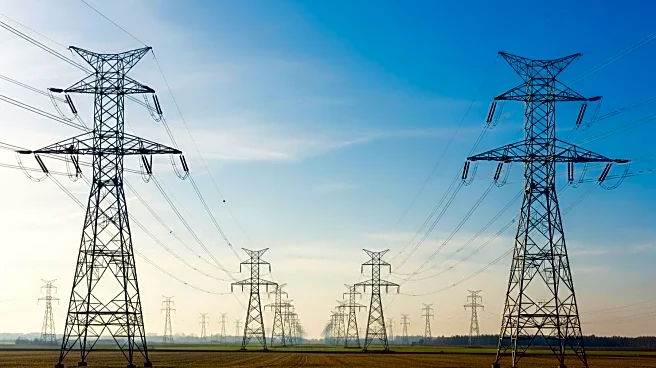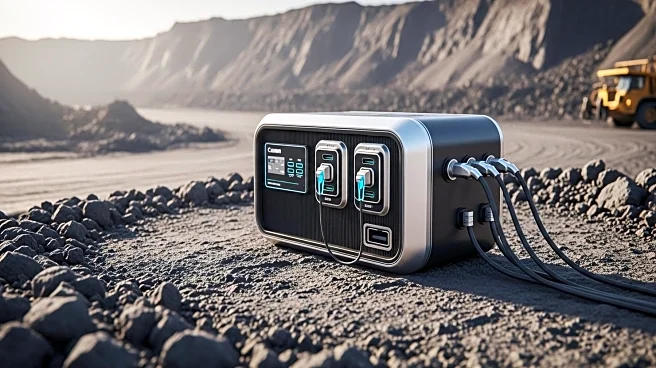What's Happening?
Researchers at Xi'an Jiatong University in China have discovered that bending ice, particularly when mixed with salt, can generate electricity. This phenomenon, known as flexoelectricity, occurs when a material produces an electric charge upon being bent. The study, published in Nature Materials, involved creating ice samples with varying salt concentrations and subjecting them to bending tests. The results showed that salty ice could generate up to 1,000 times more electricity than pure ice. The presence of salt prevents the ice from freezing completely, creating channels filled with salty water that, when bent, produce a streaming current. This discovery opens up possibilities for harnessing ice as a sustainable energy source, especially given that ice covers about 10% of Earth's surface.
Why It's Important?
The potential to generate electricity from ice represents a significant advancement in sustainable energy technology. If harnessed effectively, this method could provide a clean energy source, reducing reliance on fossil fuels and contributing to environmental conservation efforts. The discovery is particularly relevant for regions with abundant ice coverage, offering a new avenue for energy production. However, challenges remain, such as mechanical fatigue in saline ice devices and energy loss as heat. Despite these hurdles, the flexoelectric effect in ice could lead to innovative solutions for energy generation, impacting industries focused on renewable energy and environmental sustainability.
What's Next?
Further research is needed to address the challenges associated with saline ice devices, such as mechanical fatigue and energy loss. Scientists will likely explore ways to enhance the durability and efficiency of these devices to make them viable for commercial use. Additionally, the implications of this discovery may prompt interest from governments and energy companies in investing in ice-based energy technologies. As the research progresses, collaborations between scientific institutions and industry stakeholders could accelerate the development of practical applications for this technology.
Beyond the Headlines
The discovery of flexoelectricity in ice could have broader implications beyond energy generation. It may influence the understanding of electrical activity in ice-covered regions on Earth and icy ocean worlds like Europa or Enceladus. This could lead to advancements in planetary science and exploration, as well as new insights into the behavior of ice in different environments. The ethical considerations of exploiting natural ice formations for energy should also be examined, ensuring that environmental impacts are minimized.










